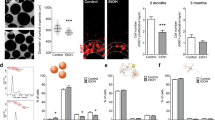Abstract
Measuring levels of fatty acid ethyl esters (FAEE) in hair has been a useful way to discriminate between adult heavy and nondrinkers. Extending the use of FAEE into neonatal hair to objectively identify children exposed to alcohol in utero may revolutionize current methods used to diagnose fetal alcohol spectrum disorder (FASD). Here we confirm for the first time that chronic exposure to alcohol during pregnancy in guinea pigs leads to increased levels of FAEE in both maternal and neonatal hair. The mean cumulative FAEE concentration in exposed maternal samples taken at GD57 was 0.431 ± 0.140 pmol/mg (mean ± SEM); levels observed in corresponding sucrose and water controls were 10-fold lower. Similarly, FAEE concentrations in exposed offspring samples taken at postnatal d 1 (mean cumulative FAEE = 0.491 ± 0.177 pmol/mg) were more than 15-fold higher than control counterparts. Sixty percent of all alcohol-exposed animal samples contained two or more quantifiable FAEE, whereas close to 90% of either water or sucrose control samples did not have more than one quantifiable level of a single FAEE. Results of this study suggest that FAEE in neonatal hair may be useful biomarkers in identifying in utero alcohol exposure and may facilitate the early diagnosis and treatment of FASD.
Similar content being viewed by others
Log in or create a free account to read this content
Gain free access to this article, as well as selected content from this journal and more on nature.com
or
Abbreviations
- CI:
-
chemical ionization
- E14:
-
ethyl myristate
- E16:
-
ethyl palmitate
- E18:
-
ethyl stearate
- E18:1:
-
ethyl oleate
- EI:
-
electron impact ionization
- FAEE:
-
fatty acid ethyl esters
- FASD:
-
fetal alcohol spectrum disorder
- GC/MS:
-
gas chromatography/mass spectrometry
- GD:
-
gestational day
- SPE:
-
solid-phase extraction
References
Sampson PD, Streissguth AP, Bookstein FL, Little RE, Clarren SK, Dehaene P, Hanson JW, Graham JM Jr 1997 Incidence of fetal alcohol syndrome and prevalence of alcohol-related neurodevelopmental disorder. Teratology 56: 317–326
Battaglia FC, Howe CJ, Stratton KR Institute of Medicine, National Institute on Alcohol Abuse and Alcoholism 1996 Fetal Alcohol Syndrome: Diagnosis, Epidemiology, Prevention, and Treatment. National Academy Press, Washington, DC
Ebrahim SH, Diekman ST, Floyd RL, Decoufle P 1999 Comparison of binge drinking among pregnant and nonpregnant women, United States, 1991–1995. Am J Obstet Gynecol 180: 1–7
Abel EL 1996 Fetal Alcohol Syndrome: From Mechanism to Prevention. CRC Press, Boca Raton, FL
Russell M, Martier SS, Sokol RJ, Mudar P, Jacobson S, Jacobson J 1996 Detecting risk drinking during pregnancy: a comparison of four screening questionnaires. Am J Public Health 86: 1435–1439
Laposata M 1999 Fatty acid ethyl esters: current facts and speculations. Prostaglandins Leukot Essent Fatty Acids 60: 313–315
Best CA, Laposata M 2003 Fatty acid ethyl esters: toxic non-oxidative metabolites of ethanol and markers of ethanol intake. Front Biosci 8: e202–e217
Bearer CF 2001 Markers to detect drinking during pregnancy. Alcohol Res Health 25: 210–218
Klein J, Karaskov T, Korent G 1999 Fatty acid ethyl esters: a novel biologic marker for heavy in utero ethanol exposure: a case report. Ther Drug Monit 21: 644–646
Ursitti F, Klein J, Koren G 1997 Clinical utilization of the neonatal hair test for cocaine: a four-year experience in Toronto. Biol Neonate 72: 345–351
Auwarter V, Sporkert F, Hartwig S, Pragst F, Vater H, Diefenbacher A 2001 Fatty acid ethyl esters in hair as markers of alcohol consumption. Segmental hair analysis of alcoholics, social drinkers, and teetotalers. Clin Chem 47: 2114–2123
Pragst F, Auwaerter V, Sporkert F, Spiegel K 2001 Analysis of fatty acid ethyl esters in hair as possible markers of chronically elevated alcohol consumption by headspace solid-phase microextraction (HS-SPME) and gas chromatography-mass spectrometry (GC- MS). Forensic Sci Int 121: 76–88
Clarke DW, Steenaart NA, Slack CJ, Brien JF 1986 Pharmacokinetics of ethanol and its metabolite, acetaldehyde, and fetolethality in the third-trimester pregnant guinea pig for oral administration of acute, multiple-dose ethanol. Can J Physiol Pharmacol 64: 1060–1067
Zahlten RN, Nejtek ME, Jacobson JC 1981 Ethanol metabolism in guinea pig: in vivo ethanol elimination, alcohol dehydrogenase distribution, and subcellular localization of acetaldehyde dehydrogenase in liver. Arch Biochem Biophys 207: 371–379
Reynolds JD, Brien JF 1995 Ethanol neurobehavioural teratogenesis and the role of L-glutamate in the fetal hippocampus. Can J Physiol Pharmacol 73: 1209–1223
Kimura KA, Parr AM, Brien JF 1996 Effect of chronic maternal ethanol administration on nitric oxide synthase activity in the hippocampus of the mature fetal guinea pig. Alcohol Clin Exp Res 20: 948–953
Catlin MC, Abdollah S, Brien JF 1993 Dose-dependent effects of prenatal ethanol exposure in the guinea pig. Alcohol 10: 109–115
Steenaart NA, Clarke DW, Brien JF 1985 Gas-liquid chromatographic analysis of ethanol and acetaldehyde in blood with minimal artifactual acetaldehyde formation. J Pharmacol Methods 14: 199–212
Chan D, Bar-Oz B, Pellerin B, Paciorek C, Klein J, Kapur B, Farine D, Koren G 2003 Population baseline of meconium fatty acid ethyl esters among infants of nondrinking women in Jerusalem and Toronto. Ther Drug Monit 25: 271–278
Bernhardt TG, Cannistraro PA, Bird DA, Doyle KM, Laposata M 1996 Purification of fatty acid ethyl esters by solid-phase extraction and high-performance liquid chromatography. J Chromatogr B Biomed Appl 675: 189–196
Refaai MA, Nguyen PN, Steffensen TS, Evans RJ, Cluette-Brown JE, Laposata M 2002 Liver and adipose tissue fatty acid ethyl esters obtained at autopsy are postmortem markers for premortem ethanol intake. Clin Chem 48: 77–83
Jennison CPR, Jennison J 1994 The determination of trace level FAMES using CI mode GC/MS. Varian Application Note 37b. Available at http://www.varianinc.com/image/vimage/docs/products/chrom/apps/gcms37.pdf
Moore C, Jones J, Lewis D, Buchi K 2003 Prevalence of fatty acid ethyl esters in meconium specimens. Clin Chem 49: 133–136
Chan D, Klein J, Koren G 2004 Validation of meconium fatty acid ethyl esters as biomarkers for prenatal alcohol exposure. J Pediatr 144: 692
Wurst FM, Alexson S, Wolfersdorf M, Bechtel G, Forster S, Alling C, Aradottir S, Jachau K, Huber P, Allen JP, Auwarter V, Pragst F 2004 Concentration of fatty acid ethyl esters in hair of alcoholics: comparison to other biological state markers and self reported-ethanol intake. Alcohol Alcohol 39: 33–38
Abel EL (ed) 1982 Fetal Alcohol Syndrome. Animal Studies. CRC Press, Boca Raton, FL
Caprara D, Klein J, Koren G 2005 Baseline measures of fatty acid ethyl esters in hair of neonates born to abstaining or mild social drinking mothers. Ther Drug Monit (in press)
Chan D, Knie B, Boskovic R, Koren G 2004 Placental handling of fatty acid ethyl esters: perfusion and subcellular studies. J Pharmacol Exp Ther 310: 75–82
Jansson T, Thordstein M, Kjellmer I 1986 Placental blood flow and fetal weight following uterine artery ligation. Temporal aspects of intrauterine growth retardation in the guinea pig. Biol Neonate 49: 172–180
Author information
Authors and Affiliations
Corresponding author
Additional information
This work was supported by grants from the Canadian Institutes for Health Research and the Ontario Graduate Scholarship program.
Rights and permissions
About this article
Cite this article
Caprara, D., Brien, J., Iqbal, U. et al. A Guinea Pig Model for the Identification of In Utero Alcohol Exposure Using Fatty Acid Ethyl Esters in Neonatal Hair. Pediatr Res 58, 1158–1163 (2005). https://doi.org/10.1203/01.pdr.0000185201.83801.ed
Received:
Accepted:
Issue date:
DOI: https://doi.org/10.1203/01.pdr.0000185201.83801.ed
This article is cited by
-
Determination of direct alcohol markers: a review
Analytical and Bioanalytical Chemistry (2015)



